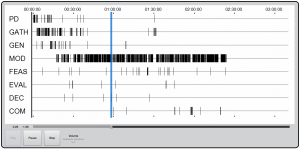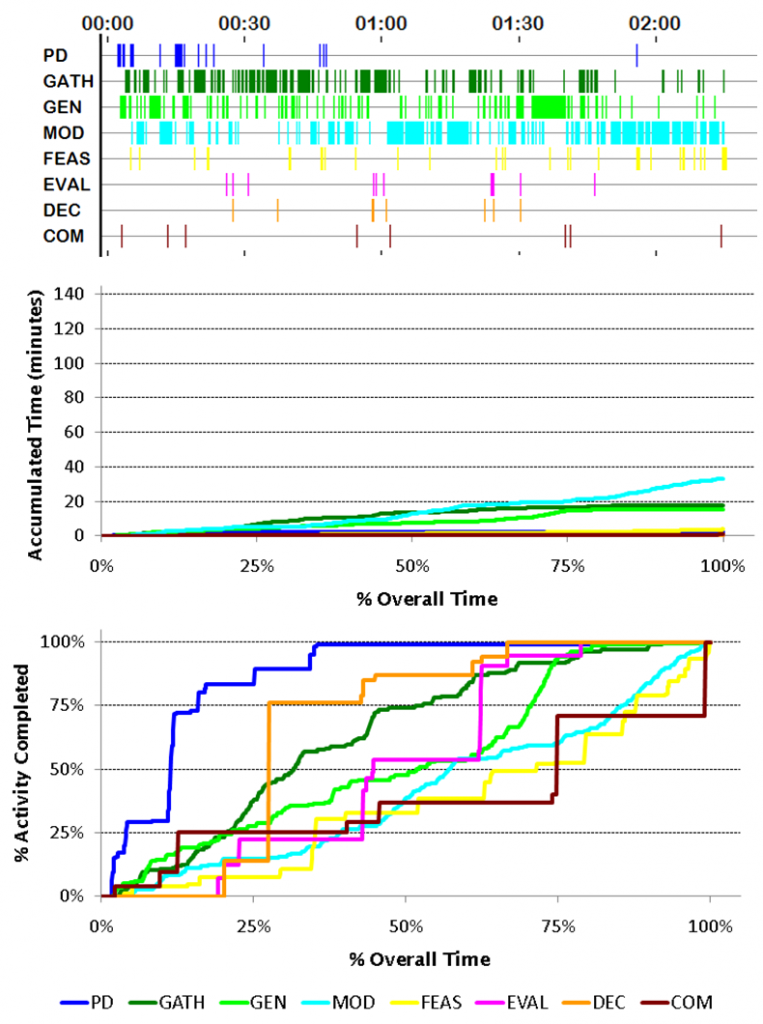CELT research supports the broad goal of more closely aligning engineering education outcomes with the needs of engineering practice. CELT design learning research seeks to…
- Characterize how students solve engineering design problems
- Understand the effectiveness of current approaches to engineering design instruction
- Develop and assess instruction to enhance engineering design learning
Research Areas
Today’s engineers must be able to consider global issues in engineering problem solving such as economic, environmental, and social factors. To this end, CELT design learning research focuses on the design processes of engineering students and the capabilities they must acquire to be effective practitioners.
More than 10 years of empirical research building on multiple data sets has allowed us to document and understand engineering student design processes. Our collective research studies…
- Describe how engineering students’ and experts’ design processes differ
- Use design representations to show differences in design activity across levels of experience and final solution quality
- How engineers consider problem context during design
- Characterize performance with various design behaviors such as problem scoping, iteration, generating solutions, and evaluating solutions
- Explore the effects of interventions on student conceptions of design
- Develop a set of metrics that can be used to document and assess design processes
- Bridge research and practice with classroom interventions informed by research findings
Please browse our highlights below and our lists of publications for more details. To learn about faculty workshops and in-class presentations that have been produced in collaboration with instructional development staff at ET&L, the Office for the Advancement of Engineering Teaching & Learning, please visit their web site.
Selected Highlights
Representations of the Design Process
CELT has developed a variety of representations of design processes and has used them for research and instructional purposes. See our ICED 2009 handout for a comparison of three such representations. More recently, we have developed sound representations of design processes to accompany our timeline representations. Visit our Design Soundtracks page for demonstrations.


Considering Context
 Effective engineers seek to understand the complex ways in which designed solutions will interact with society and the environment. See our ICREE 2007 handout and REES 2008 abstract to learn more.
Effective engineers seek to understand the complex ways in which designed solutions will interact with society and the environment. See our ICREE 2007 handout and REES 2008 abstract to learn more.
Bridging Design Learning Research & Education Practice
In addition to conducting internationally recognized research about engineering education, CELT bridges research to practice through instructional tools and services.
Assessment is an essential element of education, and we have developed a suite of techniques for assessing engineering students’ contextual competence.
CELT instructional consultants work closely with engineering faculty to build a diverse set of instructional development opportunities based on current research. These include classroom assessment techniques such as classroom observations, student surveys, and student interviews and focus groups.
We have also worked directly with students to bring our research findings into the classroom. We have presented our design representations to engineering design students to elicit new ways of think about design and promote insights into individual student design processes. Students discern meaning and patterns within the design representations, which encourages students to better understand design expertise and how to improve their own design processes.
